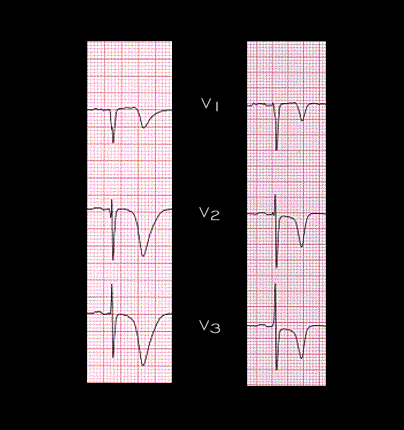
The widened T wave and marked prolongation of the QT interval may be related to changes in sympathetic innervation and stimulation within and distal to the ischemia zone. These changes usually resolve within 48 to 72 hours. Shown here on the left are leads V2, V3 and V4 from the preceding page and the same leads from the tracing taken 48 hours later (right). The T waves remain deeply inverted but the QT interval, which is 0.60 seconds (600ms) in the tracing on the left, has shortened to 0.46 seconds (460ms).
